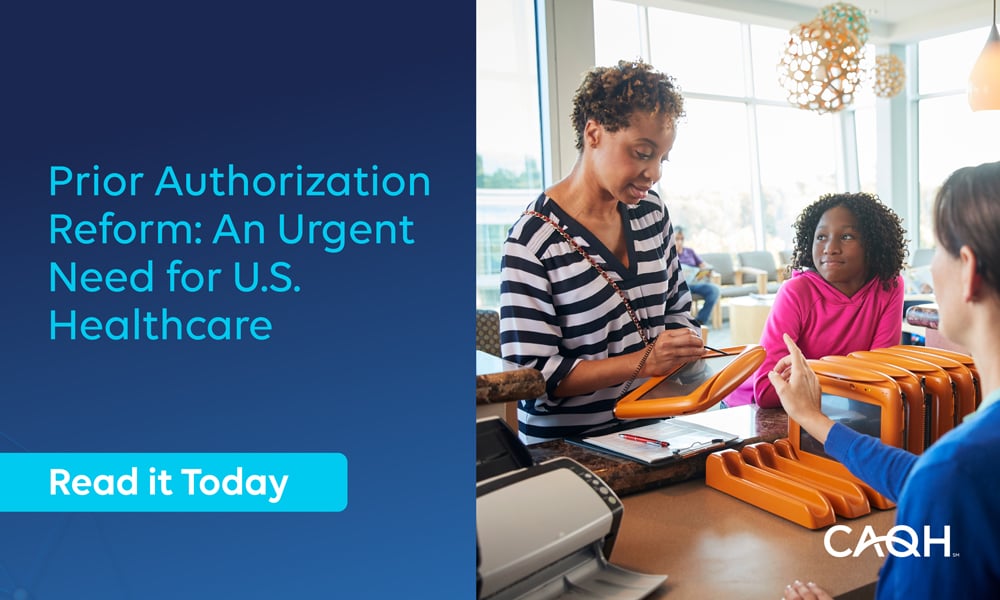The Path Forward for Prior Authorization Reform

By: Erin Weber, Chief Policy and Research Officer, CAQH
Last week’s roundtable discussion hosted by the U.S. Department of Health and Human Services (HHS) and the Centers for Medicare and Medicaid Services (CMS) offered a meaningful signal: the healthcare industry is aligning around the urgent need to improve the prior authorization process. As representatives from America’s Health Insurance Plans (AHIP), Blue Cross Blue Shield Association, and leading health plans pledged support for a more streamlined approach, the conversation shifted beyond regulatory compliance and became about execution.
Having spent nearly two decades at the intersection of healthcare policy, regulation, and interoperability, I view this moment with cautious optimism. Federal regulation and public commitments on timely and transparent electronic prior authorization (ePA) mark a critical step forward. Real progress now hinges on implementation. Moving from policy to practice requires not only technology adoption but also cultural and operational shifts across the ecosystem.
Where We Are Today: Insights from the CAQH Index
The 2024 CAQH Index provides a snapshot of this implementation gap. Today, only 35% of prior authorizations are processed electronically. Of those surveyed, just 9% can support an ePA API mandated for 2027 under a recent CMS rule, highlighting the significant work still needed across the industry to enable widespread adoption.
These figures reflect opportunity more than progress. They also point to the need for continued alignment, knowledge sharing, and clear evaluation of what’s advancing automation—and what’s standing in the way—as the industry shifts to implementation.
Collaboration is the Engine of Change
The execution challenge before us cannot be solved in silos. Industry efforts like the HL7 Da Vinci Project, the Workgroup for Electronic Data Interchange (WEDI), AHIP, Blue Cross Blue Shield Association, the National Health Council (NHC), the American Medical Association (AMA), and CAQH CORE, among others, are playing critical roles in developing use cases and advancing best practices. This work is a testament to the power of cross-sector collaboration.
The momentum we’ve seen is encouraging, and the next step is turning these intentions into real-world outcomes. That means measurable adoption, seamless workflows, and, most importantly, a better patient experience.
Reforming prior authorization will not happen overnight. But by aligning to standard approaches, committing to interoperability, and staying focused on practical implementation, we can make meaningful progress.
This is not about any one organization or initiative. It’s about a shared responsibility to modernize our infrastructure in service of the people who rely on it.
Let’s get to work.
Reach out to us at CORE@caqh.org to get involved.
